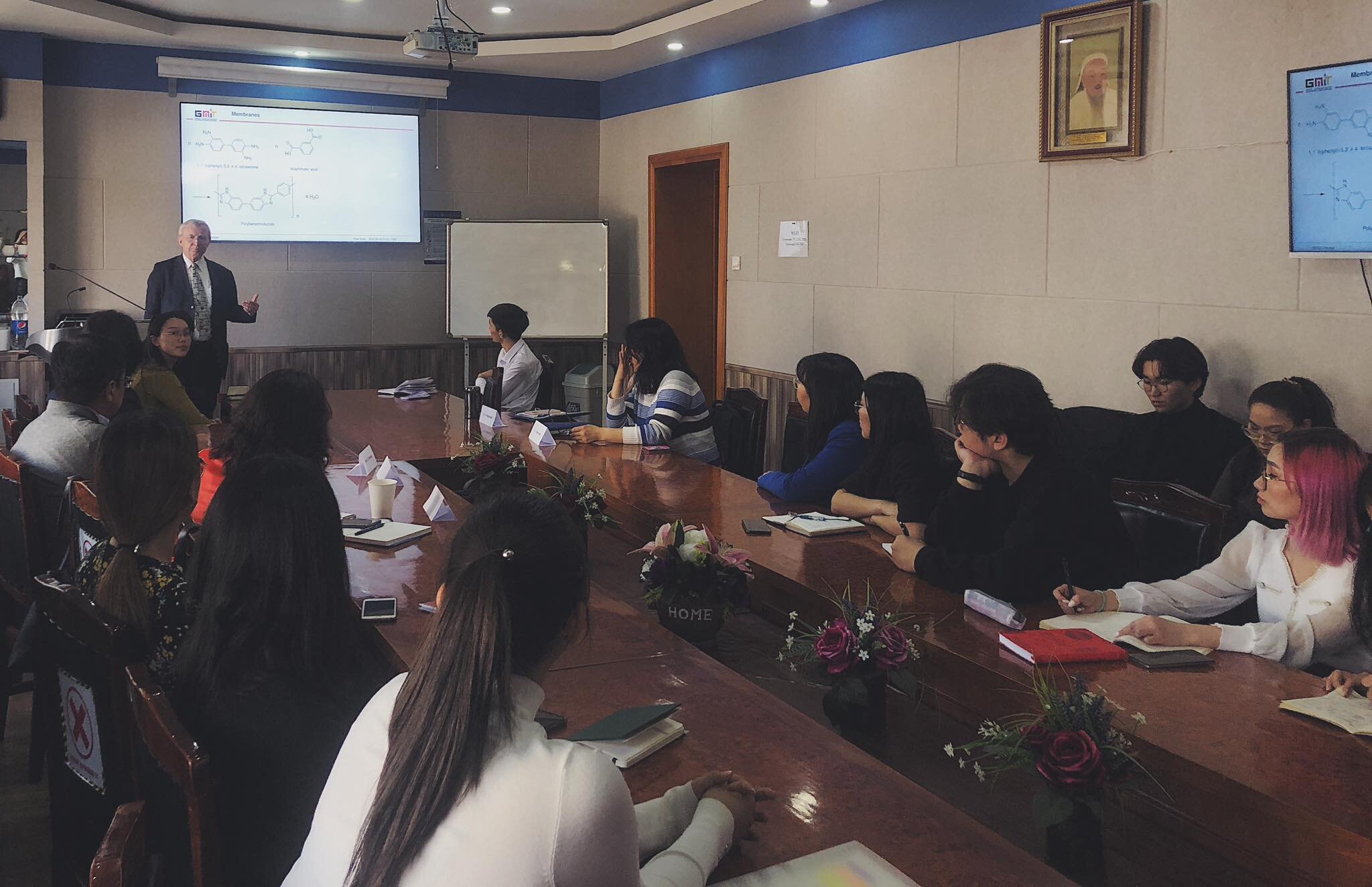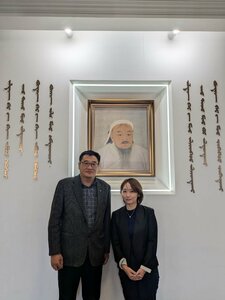A JOINT SEMINAR BETWEEN NUM & GMIT WAS ORGANIZED FOR THE FIRST TIME

There were a few problems, but I like to call them challenges, by Prof. Manfred J. Hampe of Technische Universitat Darmstadt, Germany.

The Center for Nanoscience and Nanotechnology has been working closely with other Higher Educational Institutes and research centers for both capacity-building and knowledge-sharing purposes. To accelerate the collaboration and kick off the joint meeting series, on April 7th, Rector Dr. Battsengel and professor, lecturers, and research students from German-Mongolian Institute for Resources and Technology (GMIT) visited the National University of Mongolia. This seminar begins with an opening remark made by Prof. Ganzorig and Rector Battsengel, who both pointed out the importance of the seminar and expressed their gratitude for the initiative.
The presentation by Professor Manfred J. Hampe of Technische Universitat Darmstadt was about fuel cells and the challenges and solutions associated with them. The presentation discussed the problem of the fuel used to heat homes and water being cut in Germany due to the Russian war, leading to a reliance on natural gas and coal. To combat this, Germany started producing liquid hydrogen, but there are limited hydrogen pump stations, and building a single station can cost around 1 million euros. Additionally, hydrogen is highly flammable, so fuel cells need to be sealed tight. The ion exchange membrane needs to be kept wet all the time, and the water needs to be removed manually, although modifying the membrane can allow it to function at higher temperatures and vaporize the water. The presentation also discussed the different types of fuel that can be used for fuel cells and the different types of membranes that can be used. The presentation ended by discussing the design of the fuel cells and the materials used, including steel rods that are corrosive and resistant to phosphoric acid.

The rest of the seminars were about ongoing research and project of the Nanocenter, and researcher Otgon-Ujin.M gave a brief overview of the history and the 6 main research priorities of the center, which were further discussed by the research and research students, respectively.
Researcher Nomin.Ts, the national winner of Falling Wall 2022, give a winning presentation about a biomaterials project that used waste from wool to create biomaterial fabrication and extract keratin from wool. Presented by Two methods were used to extract the keratin - chemical and biological - with both methods being found to be efficient. Keratin/PVA fibers were then created using a wet spinning method, and the material can decompose in nature. Plans for future development include upscaling the extraction and mainly using the biological extraction process.
There was also a presentation by researcher Davaajargal.D about the ASPEN program, which is used for the computation of the chemical process engineering industry. An engineering club was created to teach about industrial processes and computation and simulation using the ASPEN program. Here, mini-industrial processes were created to help students to understand the concepts of thermodynamics processes in the chemical industry during the classes. He also mentioned that this team is also collaborating with Prof. Tungalagtamir’s team at the Mongolian University of Science and Technology (MUST) to further master ASPEN and to work on technology selection for feasibility studies in the near future.
Another presentation by researcher student Narangerel.A was about the characterization and ore mineralogy from the Erdenet Mountain porphyry Copper-Molybdenum Deposit. The team's main goal was to conduct chemical and mechanical studies on the minerals of the mountain, including physical mechanical, chemical analysis, mineralogy of copper molybdenum ore, and flotation process.
Finally, there was a presentation about creating Mongolian-language learning resources for Chemical Engineering Thermodynamics by researcher Zolzaya. N. The presenter discussed the demand for engineers in Mongolia due to the country's rich mineral resources and mining industries, but the lack of resources available in the Mongolian language, especially Chemical Engineering Thermodynamics. Plans for the project include creating comprehensive textbooks in the Mongolian language, and to increase access, it will be published in both printed and online versions.




